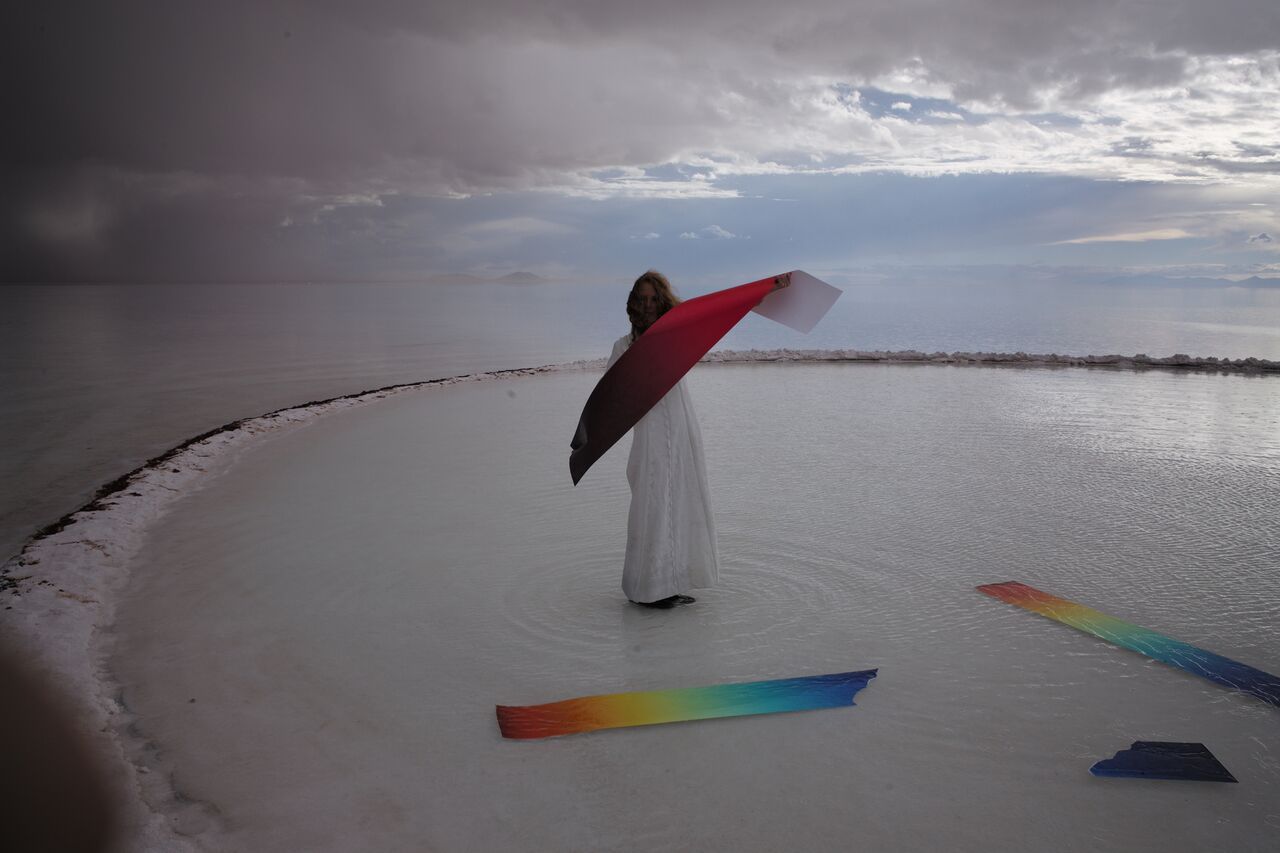Repairs in the Sky
Uyuni, Bolivia 2018 site specific multimedia installation
“Repairs in the Sky,” Fawn Rogers, site specific installation, Uyuni, Bolivia 2018
A Guest + A Host = A Ghost.
In his 1953 work, Duchamp suggests a formula by which to interpret the slippage inherent in combining people, objects and ideas. A play on words that suggests, immaterial elements can often emerge from the interaction of material forms. Fawn Rogers’s Repairs in the Sky brings this paradox to life. The work captures a meeting place between physical bodies, objects and landscapes, and these embodied connections also draw focus toward death and the spirit.
Rogers’s multidimensional work takes us to the flattest place on earth: Salar de Uyuni, Bolivia, a desolate, stripped-down landscape of an infinite salt flat. The shallow water acts as a vast mirror, visually melding almost indiscernibly with the sky. Shifting clouds are indistinguishable from their reflections. This celestial palette is captured in digital 8K 360 video. The artist, in a long, high-collared cream lace dress, appears a ghostly figure suspended between heaven and earth. She introduces vibrant color gradients and mirrored caskets, in and around a large circle of sculpted salt mounds, evoking Donald Judd’s minimalist work, at razors edge between water and air.
The thirteen-mirrored surfaces of each sculpture create a prismatic effect, through which white light is refracted into distinct hues. Large-scale photographs of the gradients in refracted light are draped, submerged, and dynamically positioned in the interstitial space between water and sky. This focus on interstitial space is likewise present in Rogers’s The World Is Your Oyster, capturing a fluid, fluctuating border between creation and destruction, presence and absence, evolution and extinction.
Throughout the work, mortality is ever-present. We encounter two animal forms, at very different moments of their life cycles. The large decaying head of a decapitated boar, with sparse flesh, fur still attached and protruding teeth, and a shy young vicuña, a picture of innocence and curiosity. The young animal approaches the carcass, not comprehending death. Rogers’s incorporation of funereal objects reflects a broader fascination with cultural responses to death. As with the Japanese suicide-prevention practice in which people lie in closed caskets, experiencing a premature taste of their own death, which Rogers’ spoke about in her solo exhibition Violent Garden. Whereas many societies fixate on the grave rather than honoring the spirit, Rogers’s work opens up the possibility of a less alienated relationship to mortality, aiming to accept death as ever present.
In a crossover with the playful, dystopian ethos of Future Suit, she positions a latex skin suit in the shallow waters of the salt flats. An empty flesh tone sack, it shifts and swells, recalling the blurred dichotomies between interiority and exteriority, materiality and imagination. We are reminded that the earth does not belong to us, but that while we are here, we belong to the earth. —Claudia Grigg Edo









































